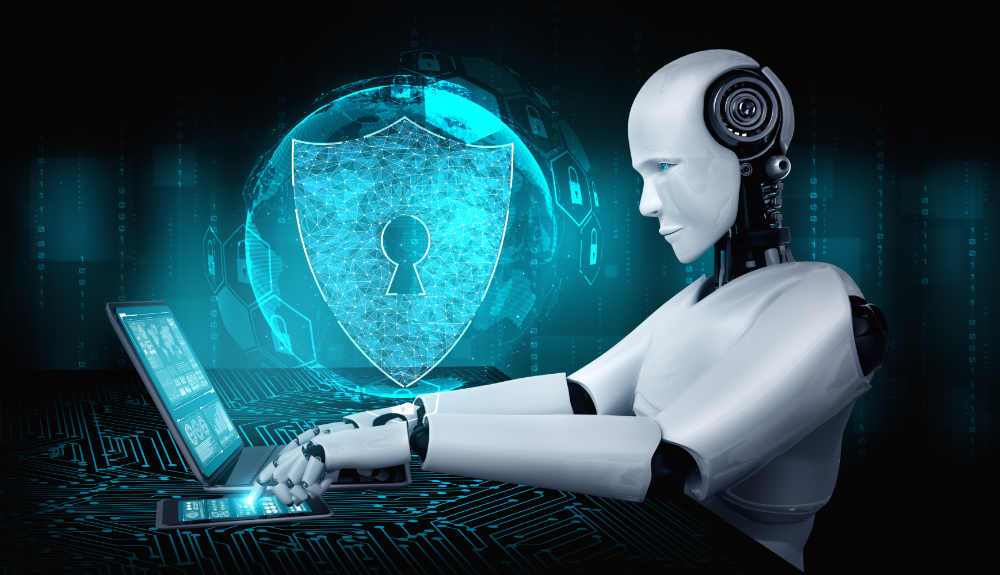Introduction: The Unforgiving Reality of Cyber Threats
In the evolving digital landscape, cybersecurity has become a top priority for CIOs. Cyberattacks, from ransomware to phishing and Distributed Denial-of-Service (DDoS), are growing not only in frequency but in sophistication. For businesses, the stakes are monumental—data breaches cost an average of $4.45 million in 2023, according to IBM’s Cost of a Data Breach Report.
The traditional reactive cybersecurity model, reliant on manual interventions and post-breach analysis, can no longer keep pace with today’s threat actors. Artificial Intelligence (AI) offers a transformational approach, empowering organizations to detect, analyze, and neutralize threats in real time. This article explores how CIOs can leverage AI to optimize cybersecurity response times and outlines a roadmap to integrate AI-powered solutions into existing ecosystems.
The Problem: Slow Response Times Enable Cyber Threat Success
For a CIO, the key question isn’t if a cyberattack will occur but when. A report by Verizon found that 83% of data breaches go undiscovered for weeks or months, allowing malicious actors ample time to exfiltrate data or deploy ransomware. Key reasons for slow response times include:
-
Data Overload: Security Operations Centers (SOCs) are overwhelmed by a deluge of alerts, many of which are false positives.
-
Siloed Systems: Legacy tools lack integration, leading to fragmented threat intelligence.
-
Manual Processes: Traditional systems rely on human intervention, increasing the time required to identify and mitigate threats.
The result is a critical delay in response times that leaves organizations vulnerable.
The AI Solution: Enhancing Cybersecurity in Real Time
AI transforms cybersecurity from a reactive function into a proactive defense mechanism. By integrating AI into cybersecurity ecosystems, CIOs can reduce detection and response times from weeks to seconds. Here’s how:
1. Threat Detection with AI-Powered Analytics
AI systems continuously monitor network activity, using machine learning algorithms to identify anomalies that deviate from normal patterns. Unlike traditional rule-based systems, AI adapts to new threats, ensuring evolving attack vectors are identified quickly.
Example: AI models can detect unusual login behaviors, such as access attempts from unrecognized devices or locations, flagging potential breaches in real time.
2. Automating Incident Response
AI-driven tools like SOAR (Security Orchestration, Automation, and Response) automate repetitive tasks such as:
-
Quarantining affected systems.
-
Blocking malicious IP addresses.
-
Patching vulnerabilities.
This automation reduces the burden on SOC teams and ensures faster containment of threats.
3. Threat Intelligence Integration
AI consolidates threat intelligence feeds, including data from public repositories, dark web monitoring, and internal logs, to provide a 360-degree view of the threat landscape. This integration enables organizations to anticipate attacks and strengthen defenses proactively.
4. Predictive Analytics for Risk Mitigation
Predictive models identify potential vulnerabilities before they are exploited. For instance, AI can predict which software systems are most likely to be targeted based on historical attack patterns, allowing CIOs to prioritize patching efforts.
Case Study: AI in Action for Real-Time Cyber Defense
A multinational financial services firm implemented an AI-powered threat detection platform integrated with their SOC. Within the first quarter:
-
Detection time decreased by 75%.
-
False positives reduced by 60%, enabling analysts to focus on legitimate threats.
-
Automated incident response mitigated three ransomware attempts, saving the company an estimated $8 million in potential damages.
Virtual Delivery Center: Revolutionizing Cybersecurity Implementation
For CIOs seeking to adopt AI-powered cybersecurity solutions without overhauling their existing infrastructure, the Virtual Delivery Center (VDC) model offers a game-changing approach. Unlike traditional in-house deployment, a VDC provides on-demand access to global talent, tools, and expertise tailored to specific cybersecurity challenges.
What is a Virtual Delivery Center?
A VDC is a cloud-based operations hub that functions as an extension of your organization, delivering:
-
AI-enabled cybersecurity services tailored to your specific needs.
-
Scalable resources for threat monitoring, detection, and response.
-
Expertise from a global pool of cybersecurity professionals.
Why CIOs Should Embrace the VDC Model for Cybersecurity
-
Cost-Effective Scalability: The VDC model allows CIOs to scale cybersecurity operations without the overhead of building and maintaining an in-house SOC.
-
Rapid Deployment: Unlike traditional implementations, VDCs can integrate AI tools and frameworks into existing ecosystems in a matter of weeks.
-
Continuous Upgrades: The VDC model ensures access to the latest AI algorithms, threat intelligence, and security updates without downtime.
-
Global Expertise: A VDC taps into global cybersecurity experts who monitor threats round-the-clock, ensuring comprehensive protection.
Example in Action
A mid-sized healthcare provider partnered with a VDC to implement AI-driven cybersecurity. The result was:
-
A 30% cost reduction in SOC operations.
-
24/7 monitoring of network activities.
-
Real-time response to potential breaches, significantly reducing risks.
The Roadmap: How CIOs Can Lead the Charge
Adopting AI-powered cybersecurity requires strategic planning. Here’s a step-by-step guide for CIOs:
-
Assess Current Infrastructure: Identify gaps in existing systems and determine areas where AI can deliver the most value.
-
Invest in AI Tools: Choose platforms that integrate seamlessly with your infrastructure, offering features like real-time detection and automated response.
-
Leverage a Virtual Delivery Center: Partner with a VDC provider to gain access to on-demand resources and expertise.
-
Prioritize Training: Upskill your team to ensure effective management and use of AI tools.
-
Continuously Monitor and Improve: Use analytics to measure the effectiveness of AI systems and refine them based on evolving threats.
Conclusion: Cybersecurity at the Speed of Business
For CIOs, the challenge of protecting an organization from cyber threats isn’t just a technological problem—it’s a business imperative. By leveraging AI-powered solutions and adopting the Virtual Delivery Center model, organizations can:
-
Detect threats in seconds.
-
Automate responses to minimize damage.
-
Reduce costs while improving protection.
In a world where time is the ultimate weapon, AI ensures cybersecurity operates at the speed of business, safeguarding critical assets and enabling organizations to stay ahead of evolving threats.

